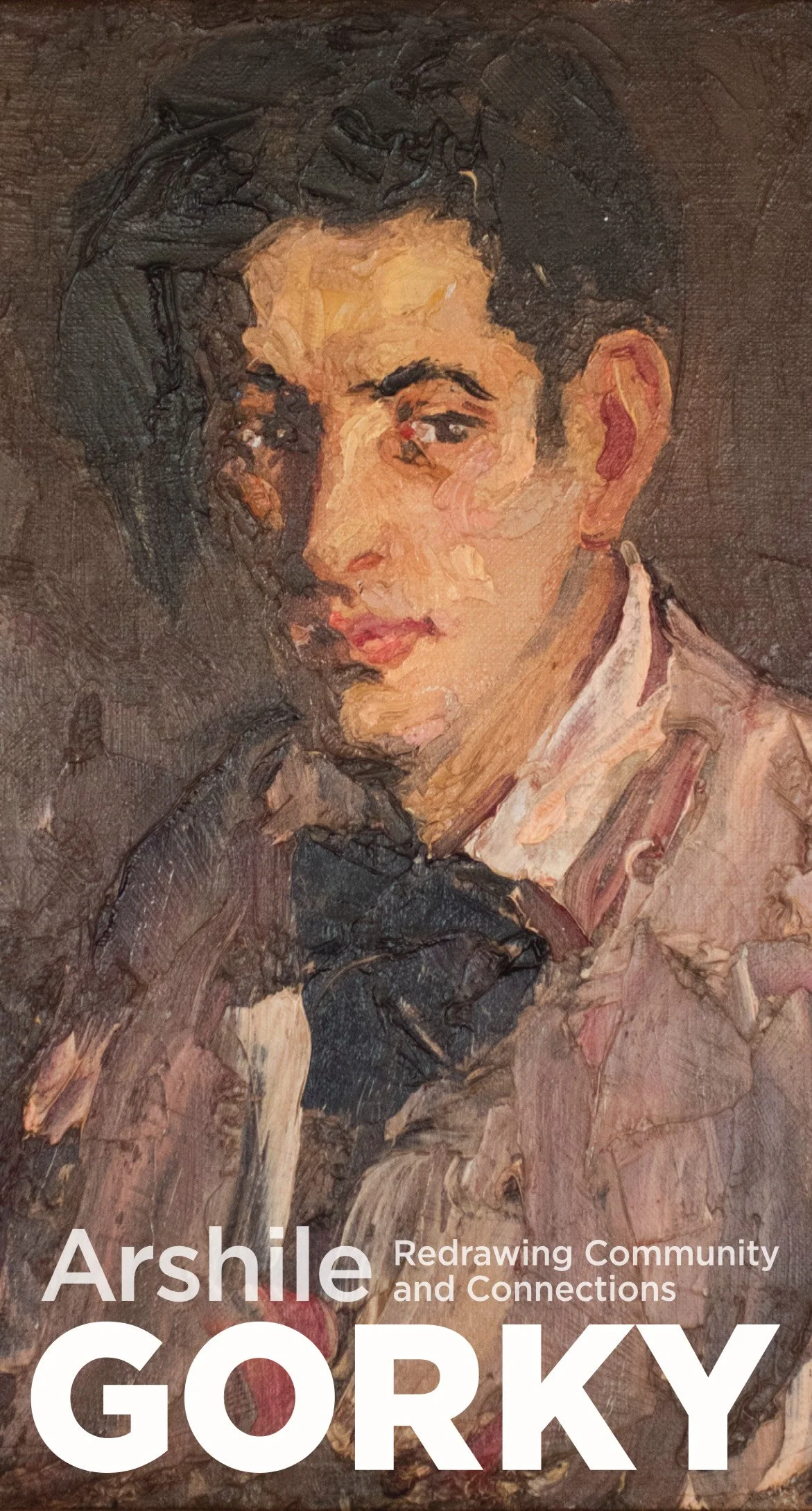Groundbreaking Arshile Gorky Exhibition to Open on December 12
We are proud to announce the opening of a landmark exhibition, Arshile Gorky: Redrawing Community and Connections, on December 12, 2025. This is the first exhibition of Gorky’s work in an Armenian museum, and it caps off a series of programs initiated by the "100 Years of Arshile Gorky" Committee in the City of Watertown.
The exhibition is curated by Kim S. Theriault, author of Rethinking Arshile Gorky published by Penn State University Press (2009), and it is sponsored by the JHM Charitable Foundation.
Arshile Gorky, “Self-Portrait,” 1923–1924, oil on canvas board, 16 x 12 inches, Private collection.
“We aimed high in the planning of this show dedicated to an Armenian artist who immigrated to Watertown in the aftermath of the Genocide, like so many of our compatriots,” explains Executive Director Jason Sohigian.
The exhibit includes 25 works from lenders across the country, including the Whitney Museum of American Art, the Housatonic Museum of Art, Yale University Art Gallery, and the Eastern Diocese of the Armenian Church of America. Many of the works have never been seen publicly, providing a once-in-a-lifetime opportunity for visitors to experience works long hidden in private collections and rarely displayed by museums.
Arshile Gorky: Redrawing Community and Connections explores key phases in Gorky’s artistic evolution, as it came to transform the trajectory of modern art in America during the first half of the 20th century. The exhibition illustrates how Gorky worked to forge a new life and artistic identity in the wake of exile and profound personal loss.
This groundbreaking exhibition serves as a fitting finale to the yearlong celebration, "100 Years of Arshile Gorky," by the City of Watertown--the Boston-area community where he lived after his escape from the Armenian Genocide. “This collection of works highlights the largely self-taught artist’s resilience, determination, and remarkable ability to create both art and community in his adopted home,” says Development Director Sarah Hayes.
At its heart, Redrawing Community and Connections emphasizes the relationships that sustained Gorky both personally and artistically. A highlight is his tender drawing of his beloved mother Shushan Der Marderosian Adoian, whom he lost to tragedy, a work that many will recognize from his most famous painting and the iconic photograph of mother and son which served as its inspiration. On loan from the Whitney Museum of American Art, this delicate portrait is rarely on view and will be seen for the first time in Boston.
“As the first Armenian museum to host an exhibition of Arshile Gorky’s work, we are honored to share this remarkable collection with our members and visitors to the Museum,” commented Michele M. Kolligian, President of the Armenian Museum of America in Watertown, MA.
“Gorky’s life and art reflect resilience, creativity, and the enduring power of community. This exhibition celebrates his extraordinary contributions to modern art and offers us an intimate look at the relationships and experiences that shaped him and his art.
“The entire Museum organization is filled with deep pride and excitement in being given the opportunity to present these rarely seen works and to invite visitors to engage with Gorky’s story in a meaningful way. We also extend our profound gratitude to the JHM Foundation for their sponsorship of this very special exhibition, and for their continued support of our mission.”
Portraits of lost family and new friends, as well as portraits of Gorky created by his contemporaries, feature prominently. The show ranges from 1927 to 1945. The multiple works on view that have been preserved for generations by families and collectors, speak to the effect of Gorky’s efforts to bond with others during his lifetime and to reclaim a sense of belonging fractured by genocide and displacement.
“This exhibition presents a fresh lens on Gorky’s legacy by emphasizing his artistic innovations and the deep human connections that informed his life and work,” says Curator Kim Theriault. “To see these rarely exhibited works gathered together--many long hidden in private homes--is a profound treat for the public. They remind us that Gorky’s journey was as much about forging relationships as it was about creating art, and his story continues to resonate today.”
“Redrawing Community and Connections underscores the devotion of Gorky’s community of friends, family, and collectors--who safeguarded even the simplest sketches,” adds Dr. Theriault. “Their efforts ensured that his vision and humanity would endure. By focusing on the expressive and emotional qualities of Gorky’s work and its ties to community, the exhibition reintroduces him as a profoundly connective figure whose modernist vision continues to shape art history.”
About "100 Years of Arshile Gorky"
Watertown has long been a haven for Armenian immigrants. The "100 Years of Arshile Gorky" Committee in the City of Watertown has been collaborating with community stakeholders throughout 2025 to commemorate the life and work of the artist Arshile Gorky (b. c. 1902-4 – d. 1948) whose distinctive practice was instrumental in forging the birth of Abstract Expressionism in the United States. After surviving the Armenian Genocide of 1915, Gorky (born Vostanik Manoug Adoian) arrived in Watertown in February 1920 as part of a third wave of Armenian immigrants escaping persecution. He lived in Watertown periodically with his sisters until 1924–1925, when he moved to New York City. Gorky’s impact on art history and his continued influence on contemporary art cannot be overstated.
The Committee is led by resident Jack Dargon and Public Arts and Culture Planner Liz Helfer, in collaboration with the Armenian Museum of America, Mosesian Center for the Arts, and the Historical Society of Watertown. The project is supported by Mount Auburn Cemetery, the Arshile Gorky Foundation, Watertown Cultural Council, Massachusetts Cultural Council, Massachusetts Department of Conservation and Recreation, Watertown Community Foundation, and Watertown’s Public Arts and Culture Committee. For more information, please visit.
Stay tuned for details.

